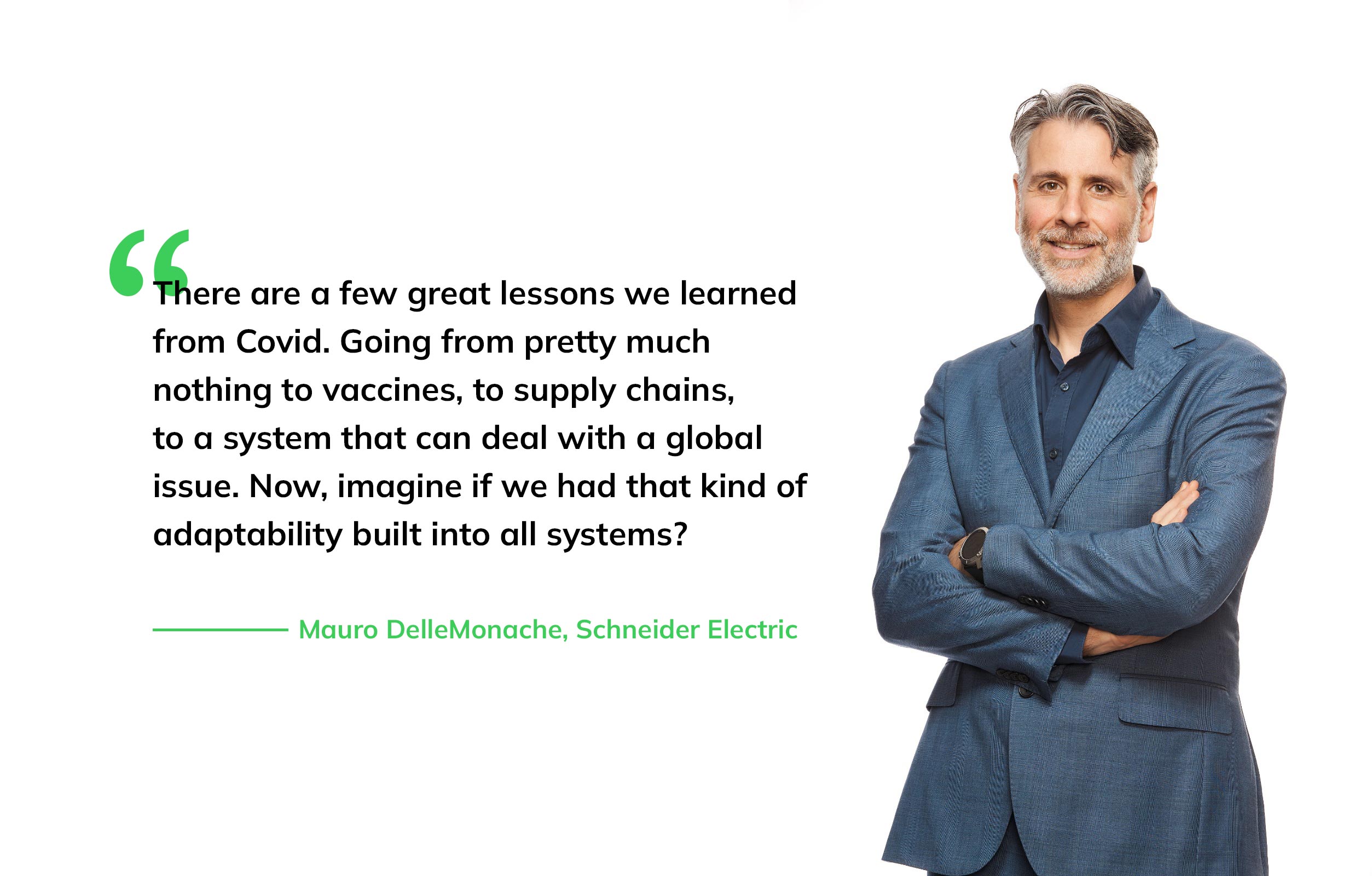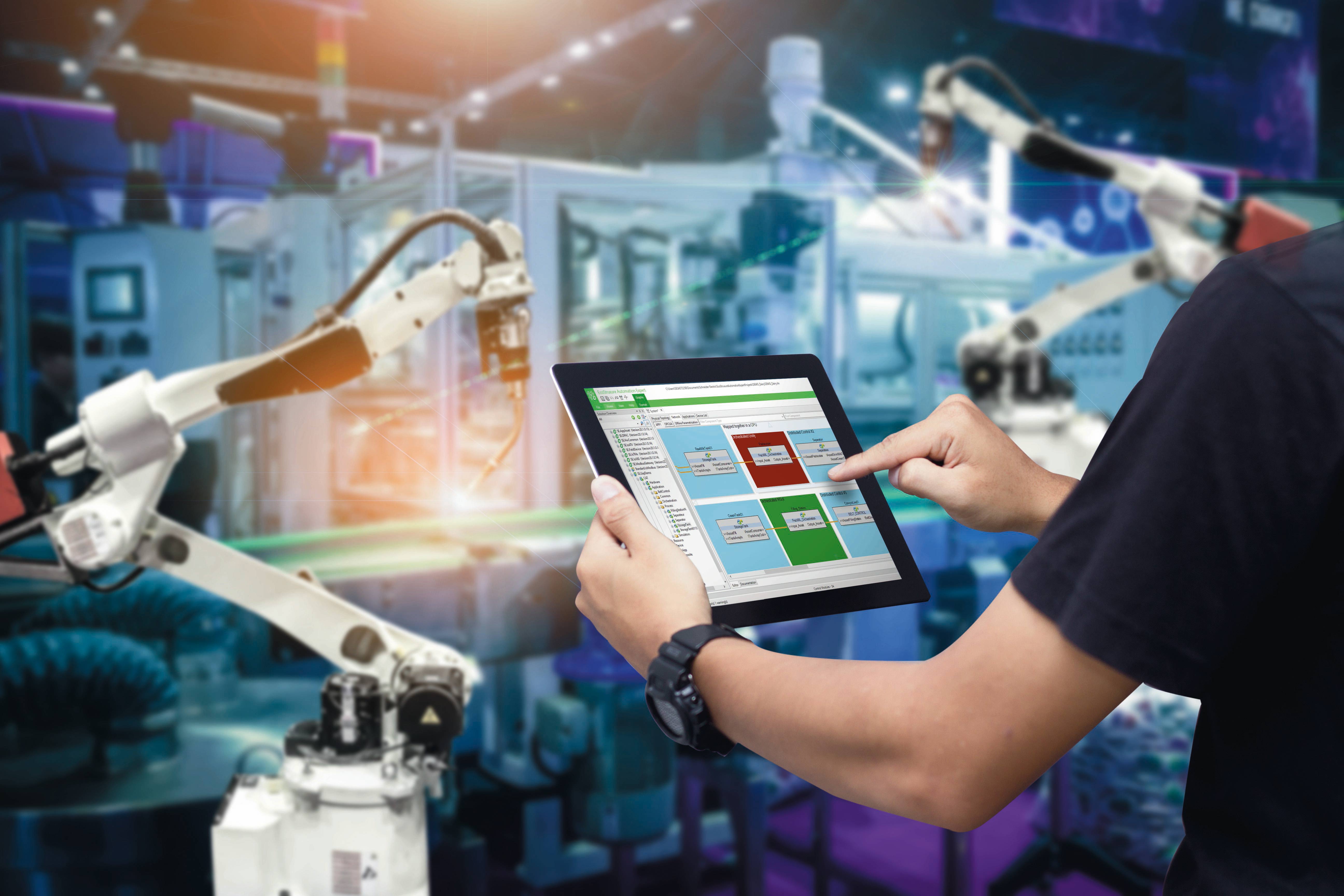Universal Automation Promises Next Industrial Revolution
Imagine the frustration of doing everything in your power to adapt to a global pandemic – from embracing digitalization early to introducing new product lines – and then be held back by inflexible and limited technology that can be supported by only a single contracted vendor.
Overreliance on closed proprietary systems is a reality for many industries, especially manufacturing. Companies become dependent on a supplier for a product or service and can’t use another supplier without incurring substantial switching charges.
This lack of interoperability within our industrial systems is costing an estimated $20-30 billion each year.[1]
The proprietary systems that most companies rely on can constrain innovation, increase total cost of ownership, and limit the integration of breakthrough digital technology. Machine learning and augmented reality, for example, could quite easily transform productivity, drive greater efficiencies, and enable more sustainable growth.
Proprietary systems can also hinder businesses’ ability to adapt to volatile market conditions.
“It's entirely possible that we would have been in a much better position across some of these situations that played out during the pandemic if automation solutions were interoperable,” said Mauro DelleMonache, Vice President, Industry, Pacific Zone at Schneider Electric.

Decoupling Software From Hardware
Schneider Electric, the global specialist in energy management and automation, believes it’s in everyone’s interests – from software vendors to end users – to embrace the next quantum leap forward for industry: universal automation.
This means decoupling software from the hardware. Moving from proprietary to standardized systems underpinned by “plug and produce” software that is easily installed on any hardware as needed – not unlike choosing from an industrial automation app store.
For DelleMonache, the pharmaceuticals sector has already shown what can be accomplished through more open collaboration.
“There are a few great lessons we learned from Covid,” he said. “Going from pretty much nothing to vaccines, to supply chains, to a system that can deal with a global issue. Now, imagine if we had that kind of adaptability built into all systems?
“So if I talk about scarcity, how many resources could we save with greater versatility? How much energy could we save across all other industries?”

New Era For Industrial Automation
Change is happening.
Schneider Electric has joined forces with other industrial leaders and pioneers, industrial end users and academic bodies to form UniversalAutomation.org,[2] an independent non-profit on a mission to develop an entirely open and vendor-agnostic ecosystem of portable and interoperable automation software that can run on virtually any hardware.
“UniversalAutomation.org is the beginning of a new era for industrial automation,” said DelleMonache.
“Current architectures have done a great job of advancing industry to where we are now, but to reach next-generation sustainability, innovation and agility, we must embrace portable and interoperable software. Doing so requires a reimagining of our current systems and processes, and collaboration on a new scale, which the UniversalAutomation.org members have agreed to do.”
“Open platforms will only become more common in the future,” added Valeriy Vyatkin, Professor of Electrical Engineering at Aalto University in Finland. “The labor market will also offer more opportunities if a candidate’s know-how is not limited to a single closed automation system. By collaborating with industrial enterprises, we can lower the threshold for adopting new technologies of the fourth industrial revolution.”
Schneider Electric notes that its EcoStruxure Automation Expert,[3] the world’s first universal automation solution, is already being called a “game-changer” by automation professionals.
Previously, automation engineers had to use various tools to design an industrial automation system. But without a common source of data, they were forced to manually repeat every task from tool to tool.
EcoStruxure Automation Expert helps industrial operations drive toward 100% engineering efficiency by creating a complete digital lifecycle for a company’s automation system. Its engineers are free to design processes independently of the system. Once their design is complete, the engineers can deploy the application on the hardware. The application is then automatically distributed, and changes can be made without further engineering.
Success Stories
Master Systèmes, an automation system integrator based in France, used EcoStruxure Automation Expert to help a cosmetics manufacturer overcome a legacy system issue that prevented it from adapting to new production needs. EcoStruxure Automation Expert enabled Master Systèmes to run a virtual simulation of their automation solution before deploying any actual resources. This enabled them to make corrections on the fly and ultimately get up and running faster.
“EcoStruxure Automation Expert allows us to modernize legacy automation systems to an Industry 4.0 solution in a managed, low-risk and agile way,” said Maurice Re, Director of Automation, Master Systèmes. “This is a game-changer for us, especially for our supply chains and warehousing capability.”
The system has also been deployed in logistics automation at Schneider Electric’s Distribution Center – a particularly complex area involving hundreds of components – to improve the various stages of the operation, from the conveyor to the sorting process.
“After implementing the EcoStruxure Automation Expert solution, our quality engineer had a holistic view of all the different mechanical and software parts on one screen,” DelleMonache said. “This enabled him to detect issues early and then take immediate action to fix it himself. This makes us much more agile – we’ve reduced the downtime period because we can act autonomously and very fast.”
Universal automation can be the catalyst for this. It can enable unprecedented levels of innovation and productivity, moving us closer to realizing the full potential of digitalization.
